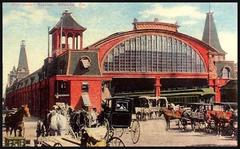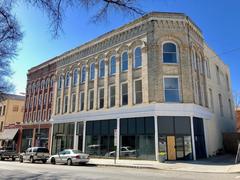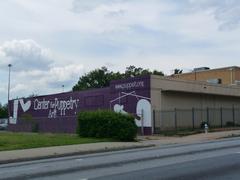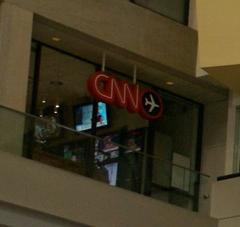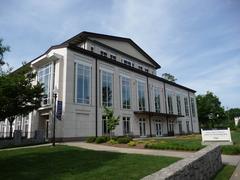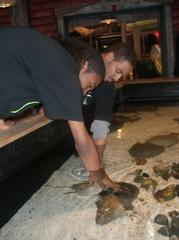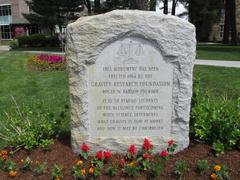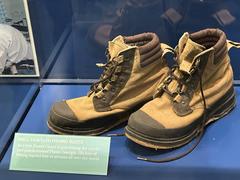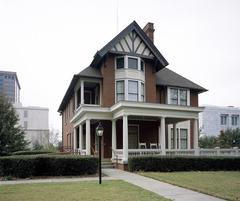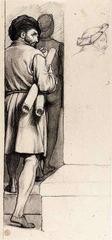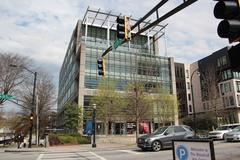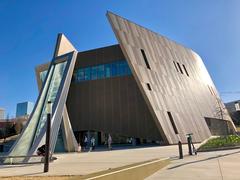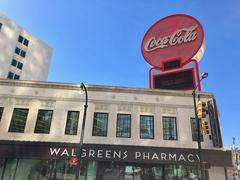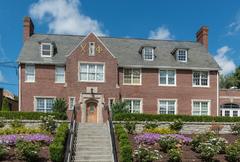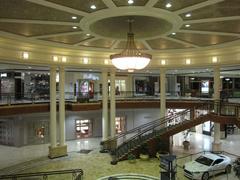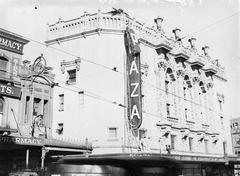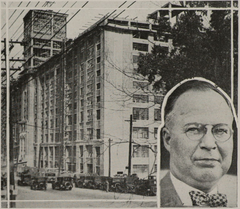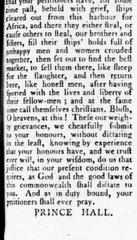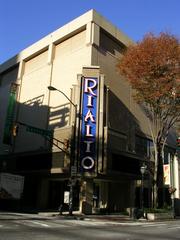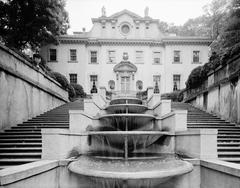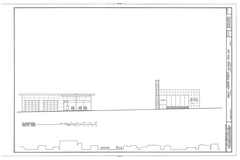
United States Penitentiary Atlanta Visiting Hours, Tickets, and Comprehensive Guide
Date: 03/07/2025
Introduction
The United States Penitentiary, Atlanta (USP Atlanta), stands as one of the most significant and historic federal prisons in the United States. Located in the heart of Atlanta, Georgia, and established in the early 20th century, USP Atlanta has been pivotal in the evolution of the federal correctional system. Its neoclassical architecture, storied inmates, and notable events reflect its enduring influence on American penal history and its ongoing impact on the surrounding community. This comprehensive guide details USP Atlanta’s history, architectural significance, visitor policies, accessibility, and practical tips, providing essential information for approved visitors and those interested in the prison’s legacy.
For authoritative details, always consult the Federal Bureau of Prisons official USP Atlanta page, the Georgia Encyclopedia, and other reputable resources.
Table of Contents
- Origins and Establishment
- Architectural and Institutional Significance
- Notable Events and Inmates
- Role in American Penal History
- Cultural and Social Impact
- Visiting Hours, Entry Requirements, and Visitor Policies
- Security, Dress Code, and Accessibility
- Directions, Parking, and Nearby Attractions
- Frequently Asked Questions (FAQ)
- Conclusion
- References and Resources
Origins and Establishment
USP Atlanta was authorized by Congress in 1899 and officially opened in 1902. Its creation was part of a broader federal initiative to centralize and standardize the incarceration of federal offenders, who previously were housed in state or local facilities. The site selection and construction were influenced by prominent figures of the era, including Georgia Congressman Leonidas F. Livingston and U.S. Attorney General John W. Griggs. The architectural firm Eames and Young, with input from the U.S. Army Corps of Engineers, designed the prison, making it a model institution for the newly established federal prison system (Federal Bureau of Prisons).
Architectural and Institutional Significance
USP Atlanta’s main building is a striking example of neoclassical and Beaux-Arts architecture, featuring a central rotunda and radiating cell blocks designed to maximize surveillance, security, and control. The use of durable materials and a symmetrical layout reflects early 20th-century penal philosophies emphasizing both order and rehabilitation. The original structure accommodated up to 3,000 inmates and included administrative offices, workshops, and recreational spaces—embodying the Progressive Era’s focus on reform and structured labor (SAH Archipedia).
The prison’s layout and operational philosophy influenced the design of subsequent federal penitentiaries, setting standards for security, management, and rehabilitation programs (National Register of Historic Places).
Notable Events and Inmates
USP Atlanta has housed some of America’s most infamous criminals, including Al Capone, Carlo Ponzi, and Whitey Bulger (US Prison Guide). The prison also played a role in the civil rights era, briefly detaining Martin Luther King Jr. during protests in Georgia (King Institute).
A defining episode in its history was the 1987 Cuban detainee riot, when Cuban nationals held at the prison following the Mariel boatlift staged an 11-day uprising, resulting in significant property damage and national scrutiny of U.S. immigration and prison policies (New York Times).
Role in American Penal History
As one of the first three federal penitentiaries, USP Atlanta has been central to the evolution of federal corrections. Its early years saw experiments with educational and vocational training, reflecting shifts in American penal philosophy. Over the decades, the facility has adapted to national trends, transitioning from a rehabilitation focus to stricter security and sentencing policies, particularly during the war on drugs and changing immigration enforcement (Federal Bureau of Prisons History).
USP Atlanta has functioned as both a long-term prison and a transfer and detention center due to its strategic southeastern location (BOP Facility Locator).
Cultural and Social Impact
USP Atlanta’s imposing structure is a local landmark and a frequent subject of books, documentaries, and news reports, reflecting its place in the American imagination (Atlanta Journal-Constitution). The prison’s presence has shaped Atlanta’s social and economic landscape, providing employment and influencing debates on justice, reform, and incarceration.
Its detailed inmate records have served as vital resources for historical and social research (Wikipedia).
Visiting Hours, Entry Requirements, and Visitor Policies
Visiting Hours
USP Atlanta schedules visitation on Fridays, Saturdays, Sundays, and federal holidays, typically from 8:00 a.m. to 3:00 p.m. All visitors must arrive before 2:00 p.m. for processing. The minimum-security camp follows a similar schedule (InmateAid).
Visitor Eligibility and Scheduling
- All visitors must be pre-approved and appear on the inmate’s official visitor list.
- Approval requires submission of personal information and may involve a background check.
- Minors must be accompanied by a parent or legal guardian.
- There is no ticketing system; scheduling and approval serve as admission control.
Entry Requirements
- Valid government-issued photo ID is required (e.g., driver’s license, passport).
- Minors need a birth certificate or equivalent documentation.
- Up to four visitors (including children) are allowed per session.
- No fee is required for visits.
Security, Dress Code, and Accessibility
Security Procedures
- All visitors are subject to metal detectors, bag checks, and pat-downs.
- Prohibited items: cell phones, electronic devices, cameras, large bags, food, beverages, tobacco, weapons, or sharp objects.
- Only essentials like ID and a small wallet are permitted; limited lockers may be available.
Dress Code
- Conservative, non-revealing clothing is mandatory.
- Avoid shorts, miniskirts, sleeveless tops, tank tops, low-cut shirts, and clothing with offensive graphics.
- Footwear must be worn at all times.
- Excessive jewelry and accessories are discouraged.
Accessibility
- Wheelchair-accessible entrances and restrooms are provided.
- Visitors needing special accommodations should notify the facility in advance.
Directions, Parking, and Nearby Attractions
Directions and Parking
- Address: 601 McDonough Blvd SE, Atlanta, GA 30315.
- By car: From I-75, take Exit 244 for University Avenue and follow signs.
- Parking is on-site but limited; arrive early, especially on weekends.
- Public transportation: Bus stops are within a mile; MARTA does not directly serve the facility (Lonely Planet).
Nearby Attractions
- Martin Luther King Jr. National Historical Park
- Atlanta History Center
- Oakland Cemetery
- Grant Park and the Atlanta BeltLine
These sites offer rich insights into Atlanta’s history and culture.
Frequently Asked Questions (FAQ)
Q: Are tickets required to visit USP Atlanta?
A: No tickets are needed, but all visits must be pre-approved and scheduled.
Q: What documentation is required?
A: A valid government-issued photo ID for adults; a birth certificate or official documentation for minors.
Q: Can I bring electronics or food?
A: No, all electronics, food, and beverages are prohibited.
Q: Is USP Atlanta wheelchair accessible?
A: Yes. Notify staff in advance for special accommodations.
Q: Are there guided tours or public events?
A: No public tours or events are offered due to security protocols.
Q: How do I check my approval status for visitation?
A: Confirm with the inmate or contact the institution directly.
Conclusion
USP Atlanta is a cornerstone of American penal history, reflecting over a century of reform, security challenges, and evolving rehabilitation practices. While it remains an active federal correctional facility with no public tours, approved visitors can access the institution under strict regulations. Its legacy, architecture, and role in pivotal historical events make it a lasting landmark in Atlanta. For the latest policies and visitation updates, always refer to the official Bureau of Prisons USP Atlanta page.
If you’re planning a visit, respect the institution’s guidelines, prepare thoroughly, and take the opportunity to explore Atlanta’s surrounding historic sites.
References and Resources
- Federal Bureau of Prisons: USP Atlanta
- United States Penitentiary, Atlanta - Georgia Encyclopedia
- Federal Correctional Institution, Atlanta - Wikipedia
- USP Atlanta Visiting Hours and Visitor Guide - InmateAid
- Atlanta Prison Riot Ends as Cubans Release Last Hostages - New York Times, 1987
- US Prison Guide - USP Atlanta
- The Prison Direct - Atlanta United States Penitentiary
- Prison Legal News - Atlanta Federal Prison Gets Another Reboot
- Federal Criminal Defense Attorney - USP Atlanta Overview
- SAH Archipedia - USP Atlanta Architecture
- Lonely Planet - Things to Know Before Traveling to Atlanta








